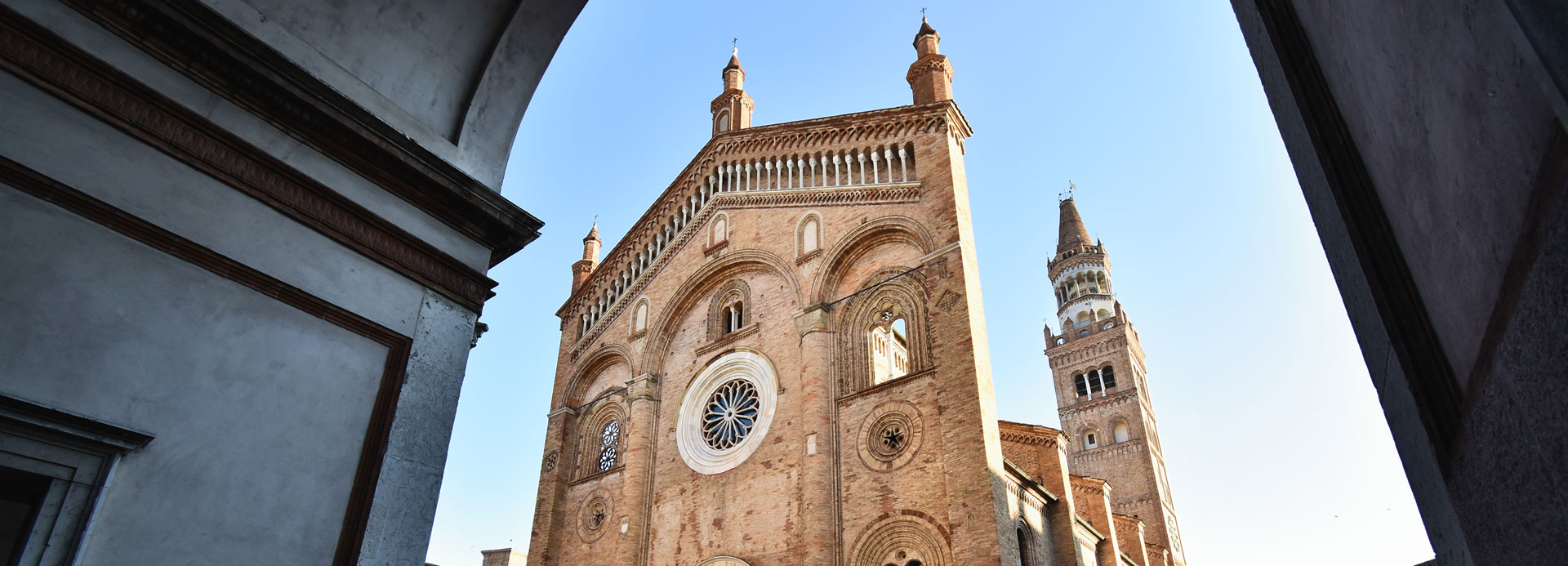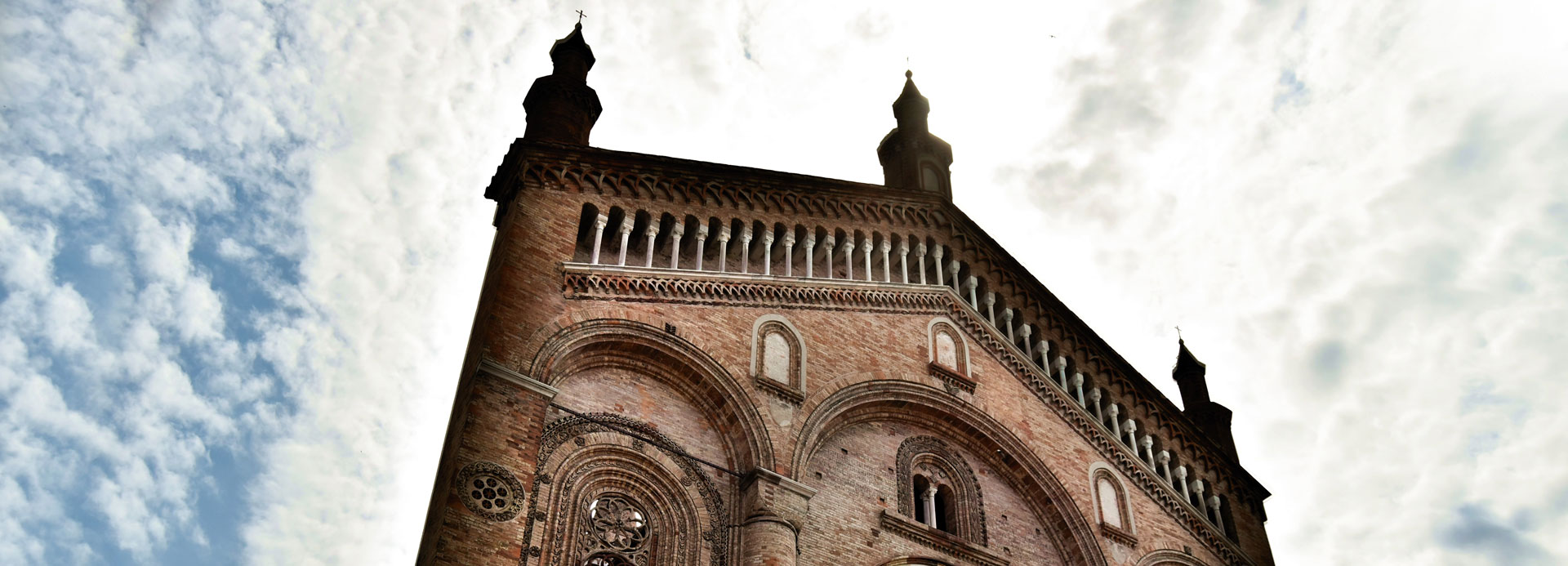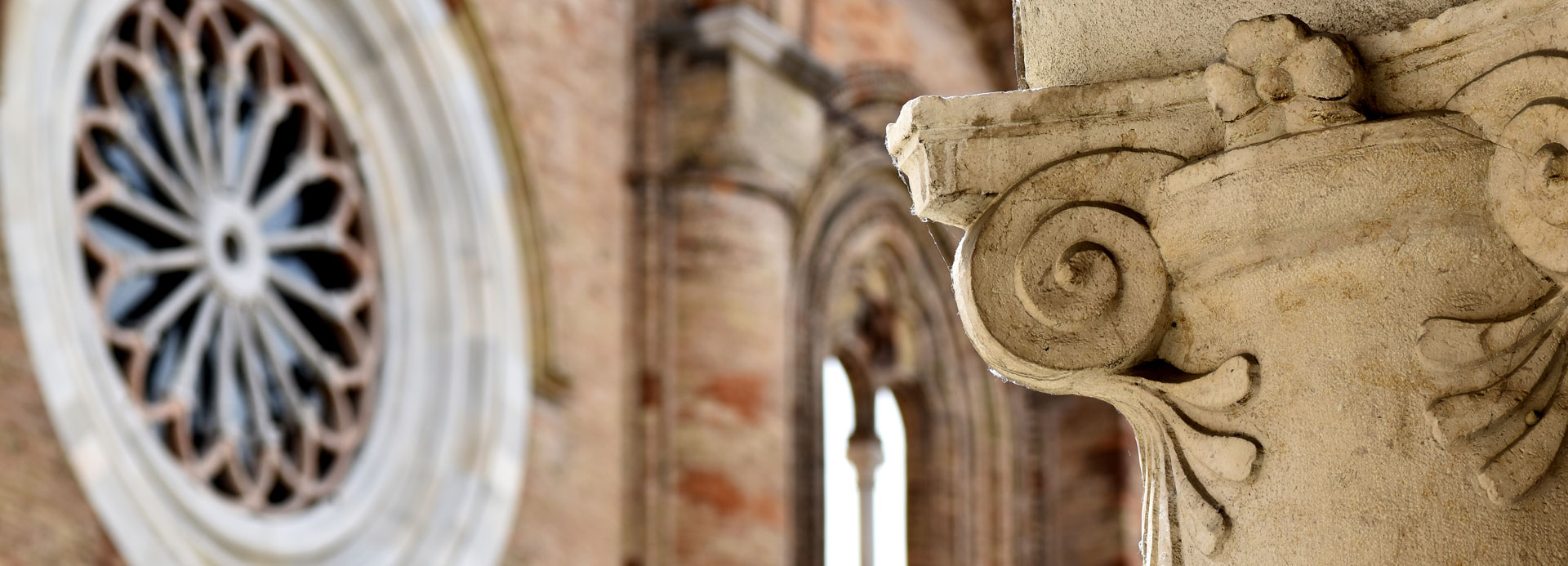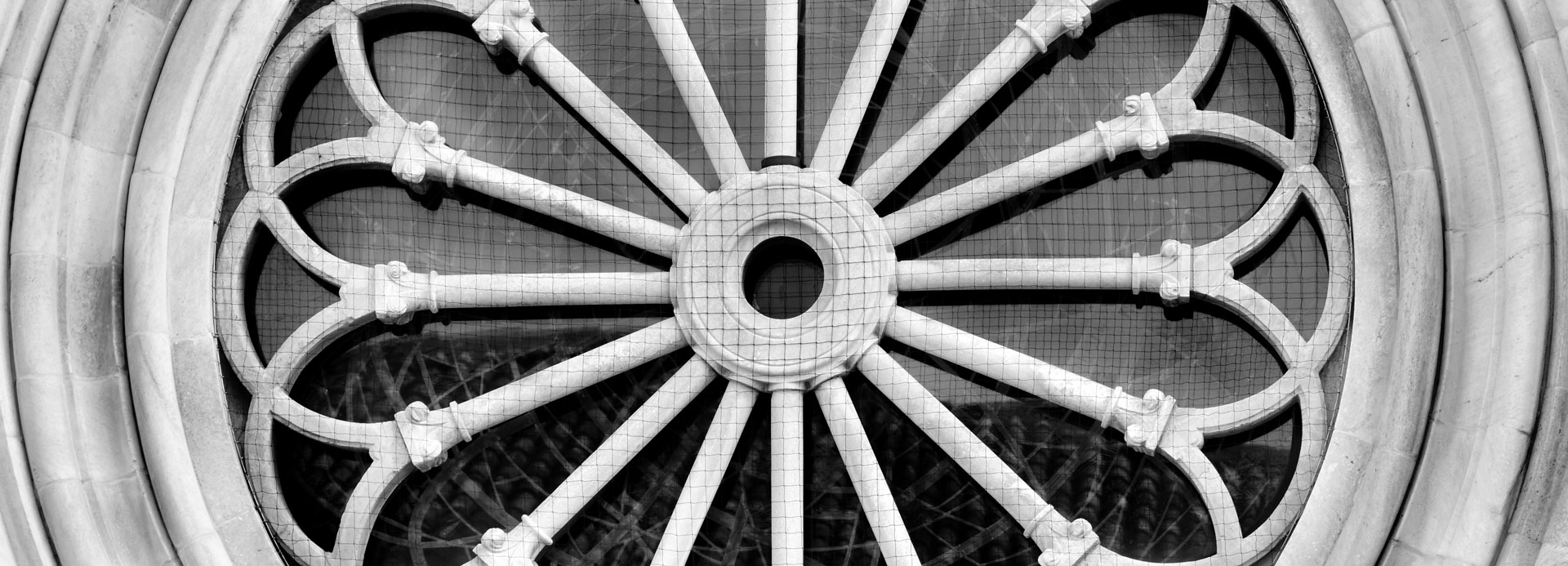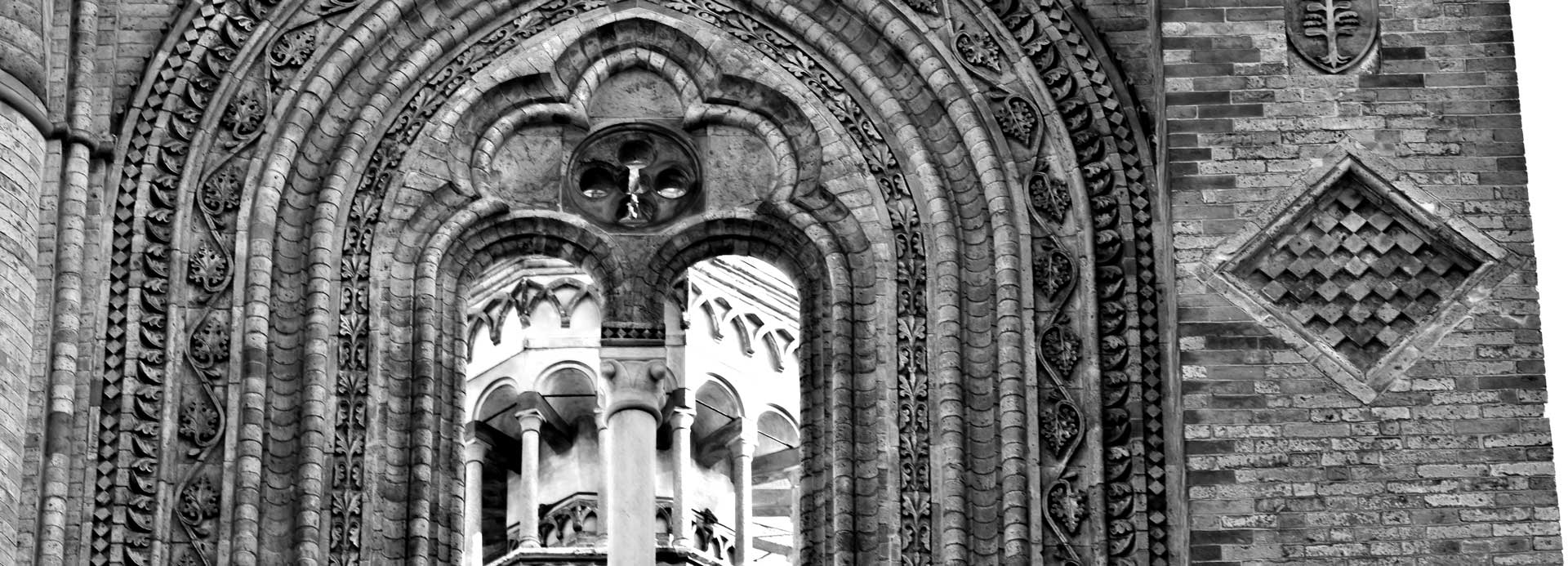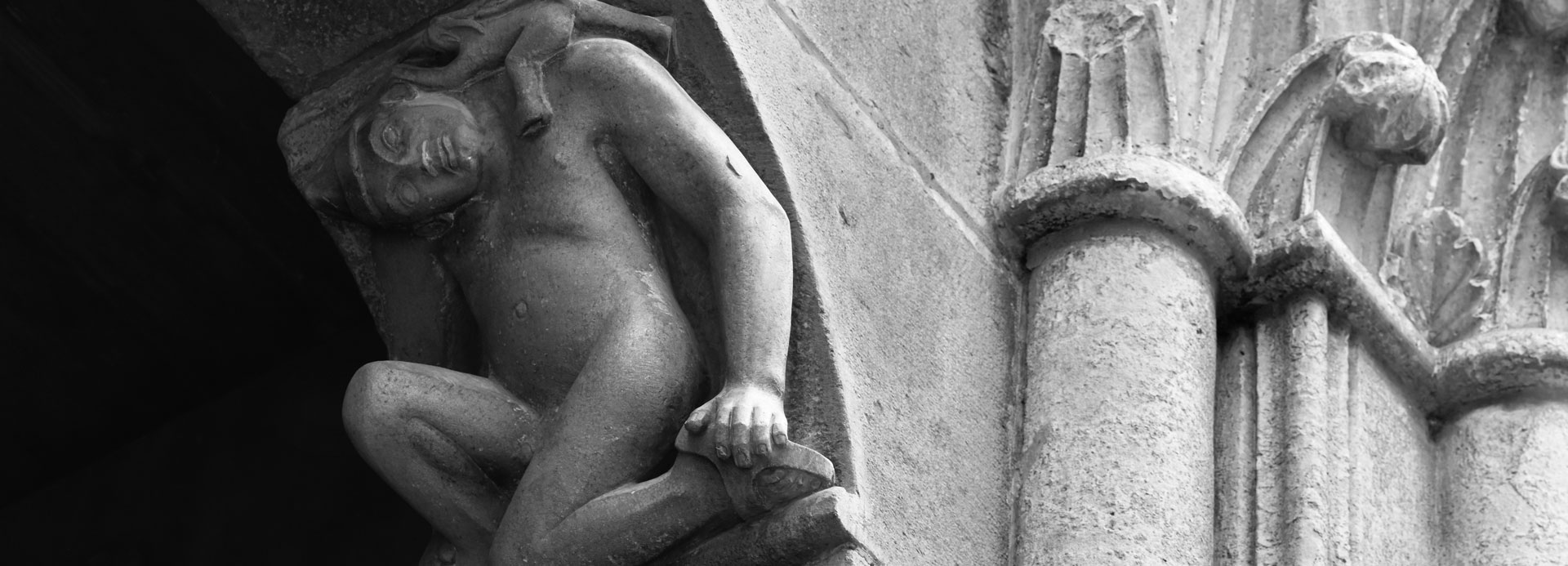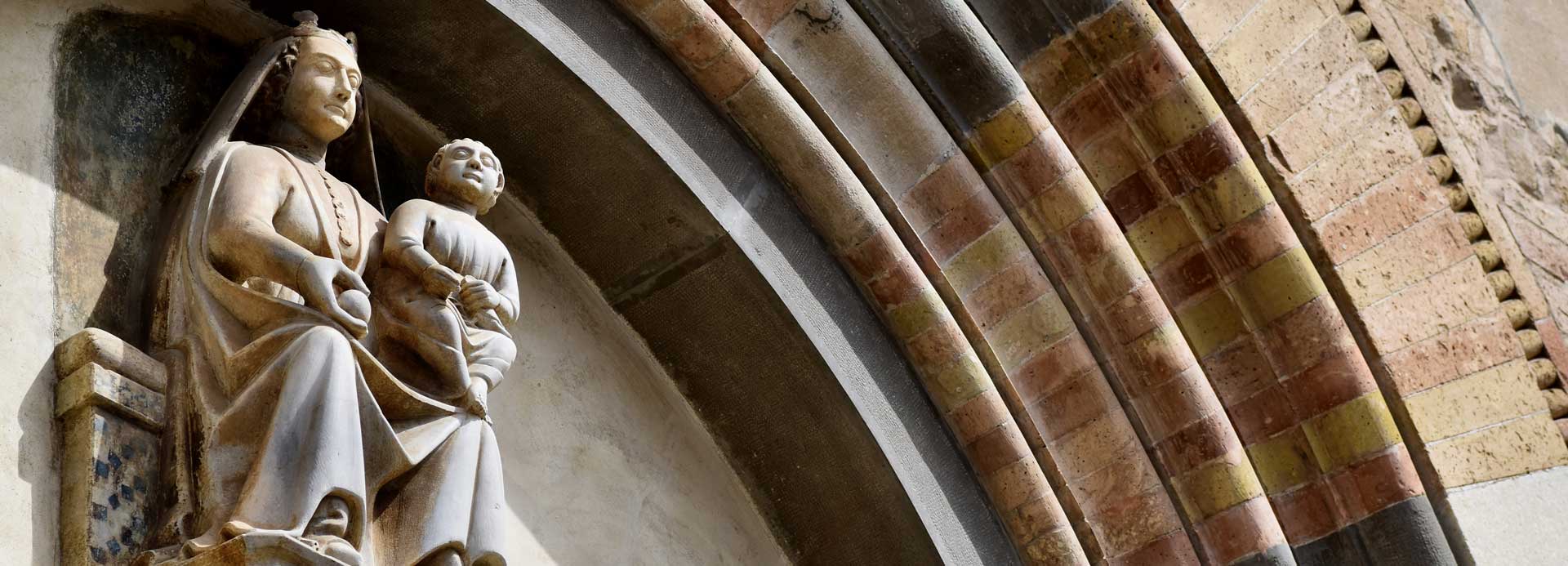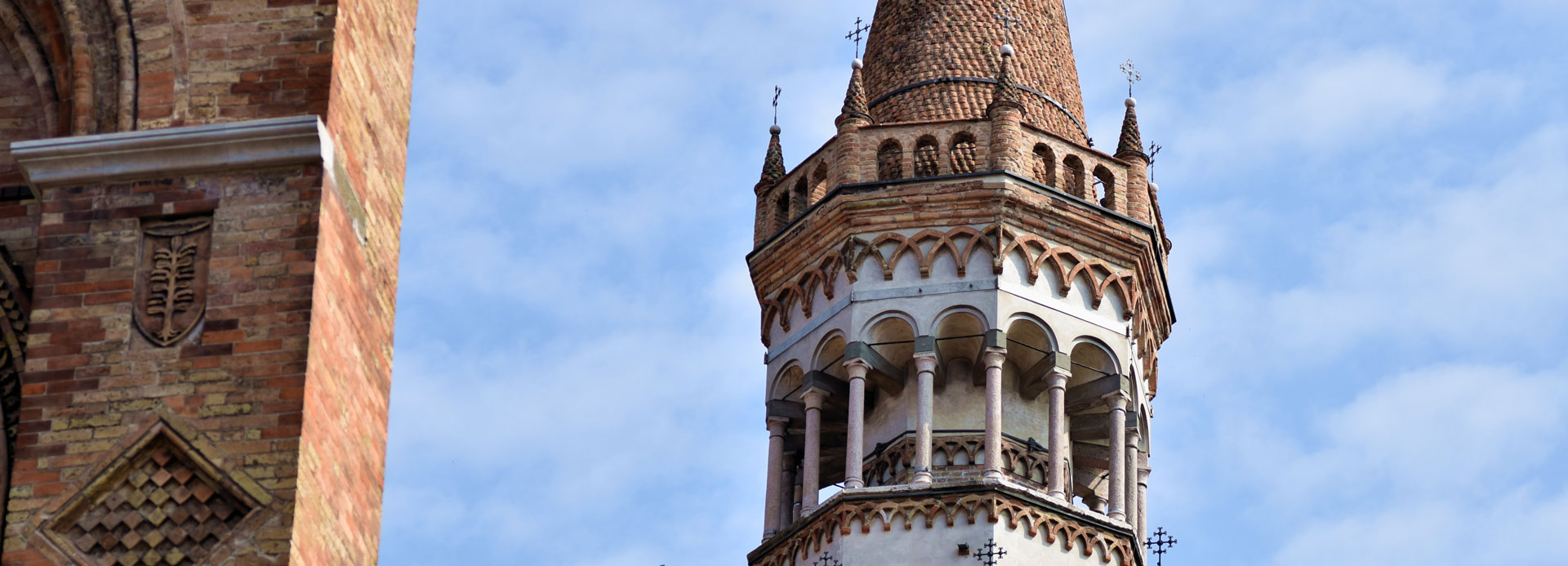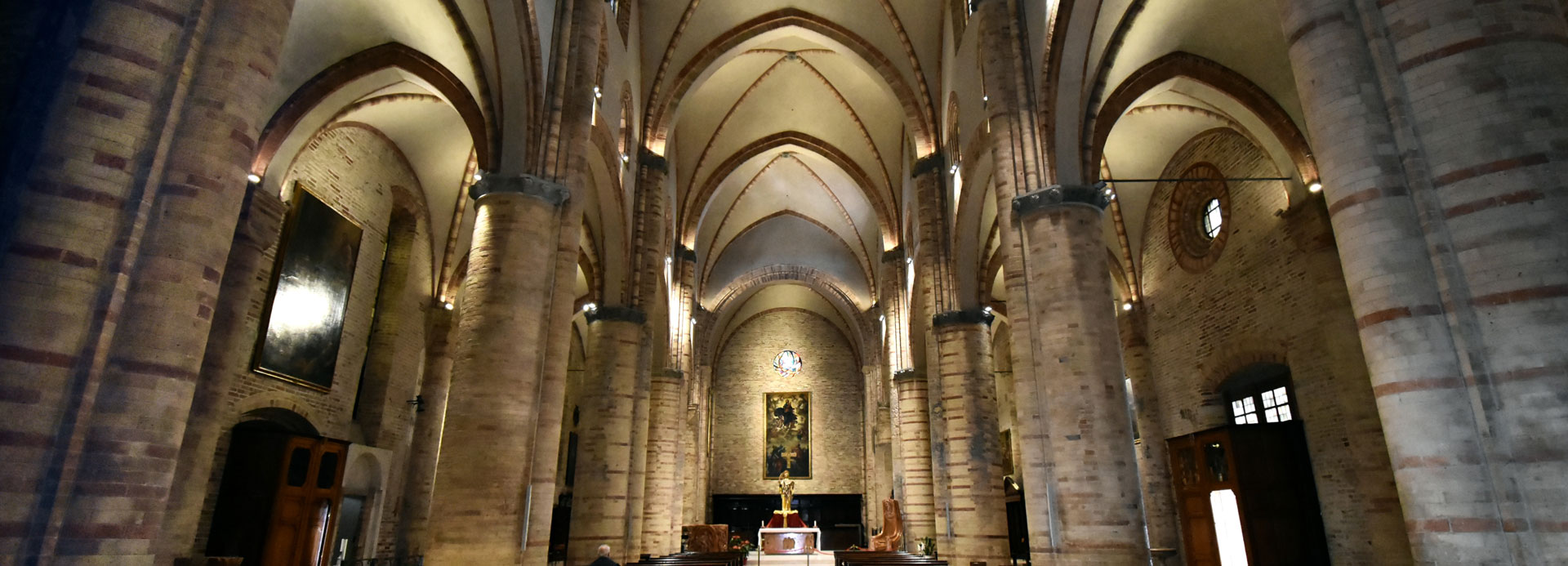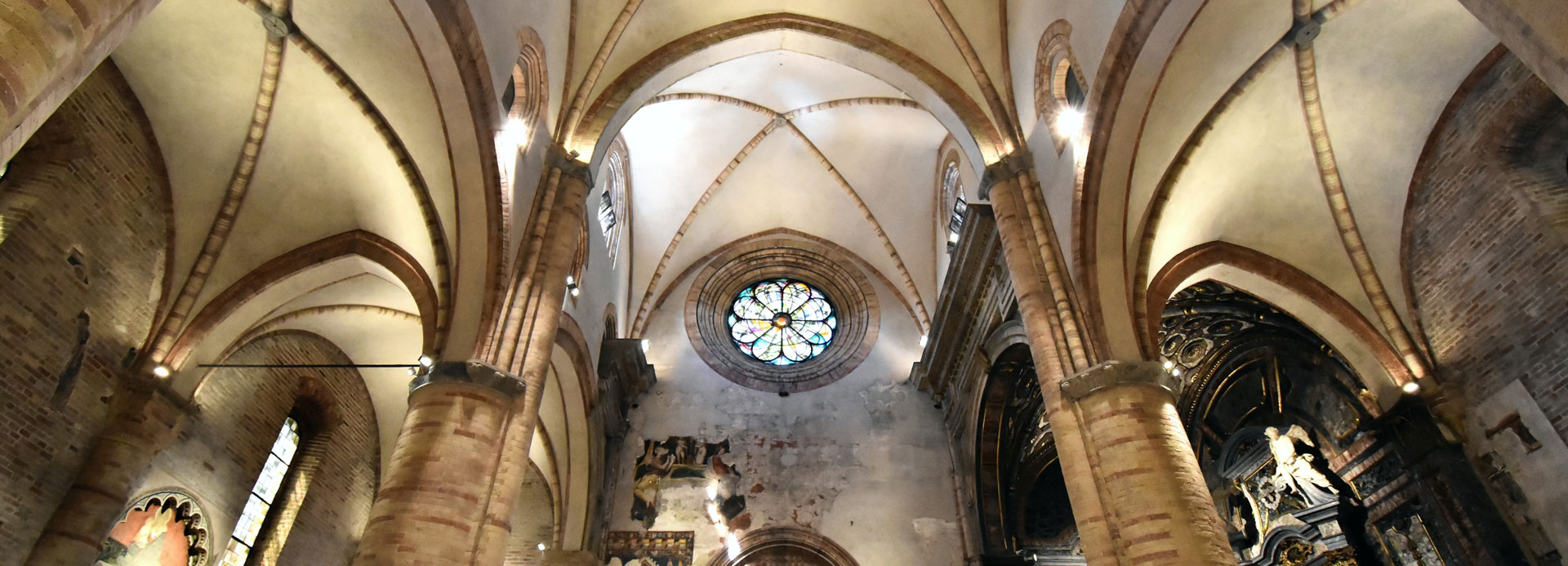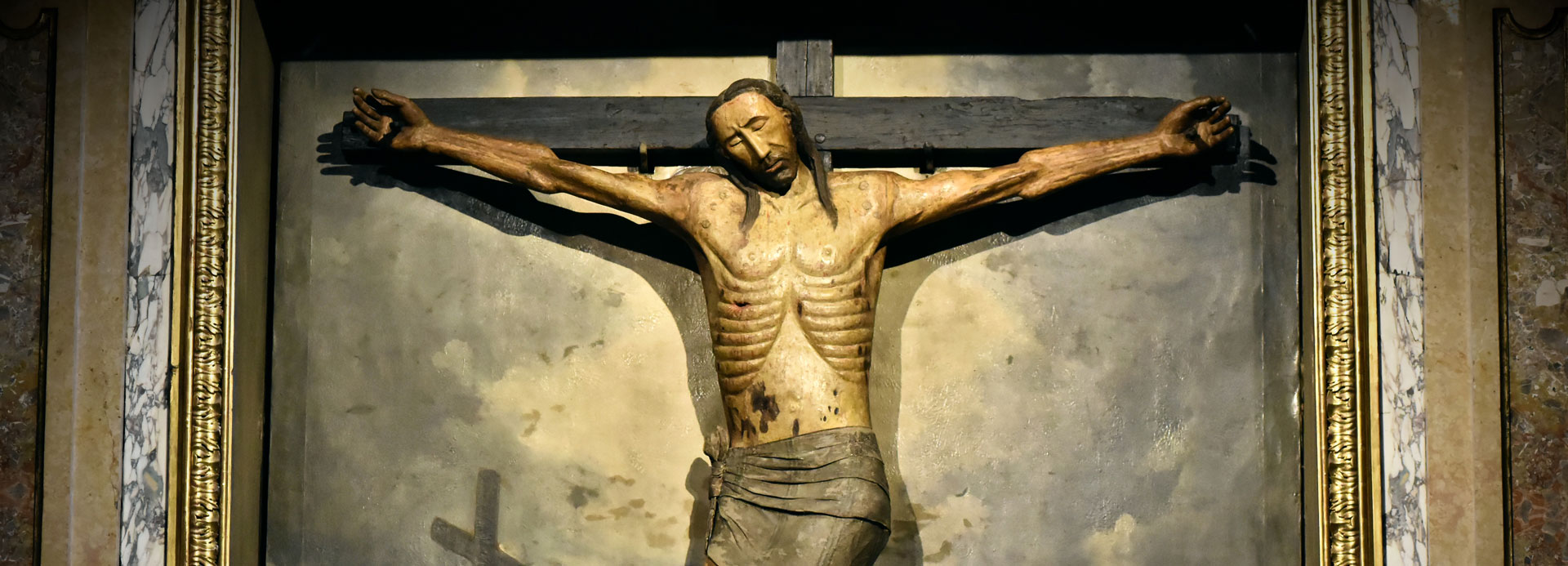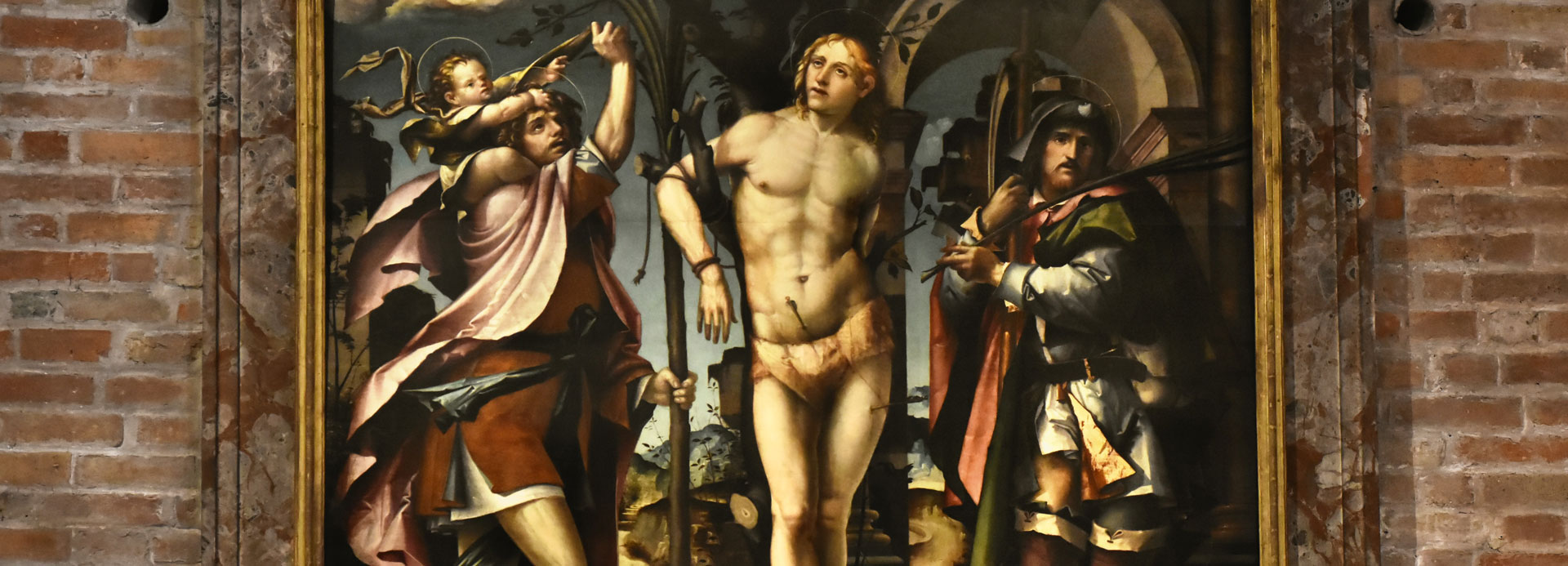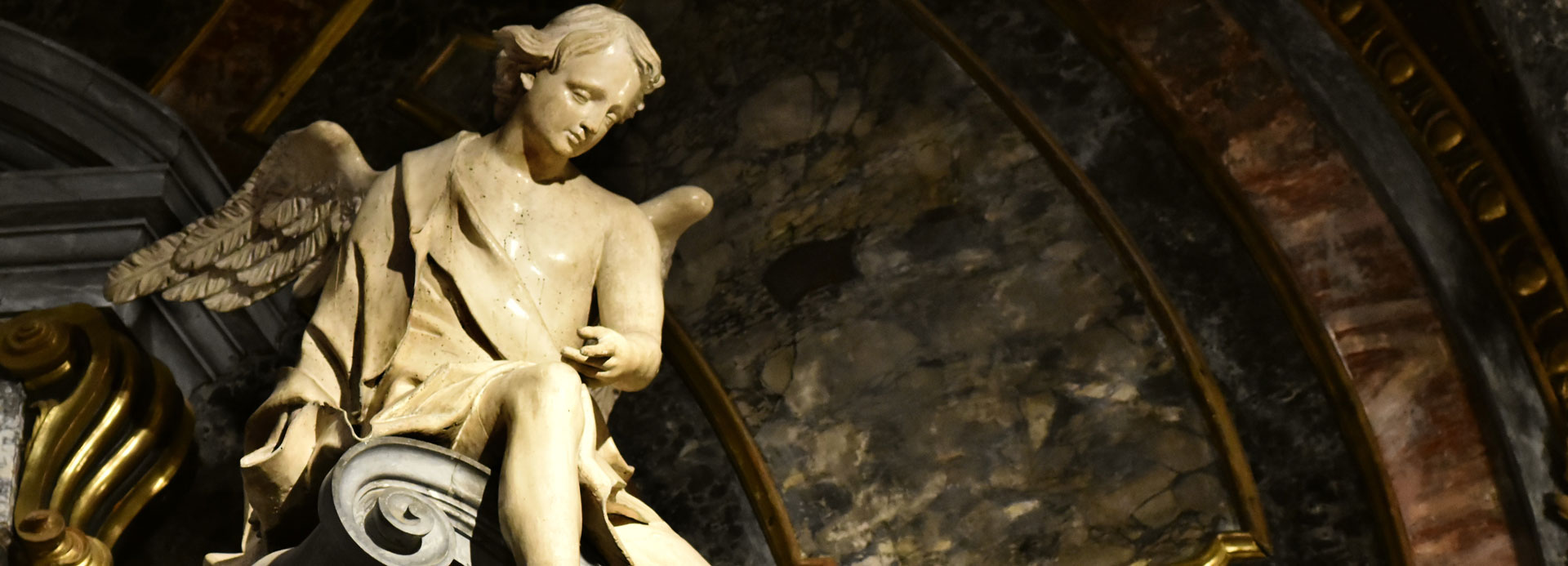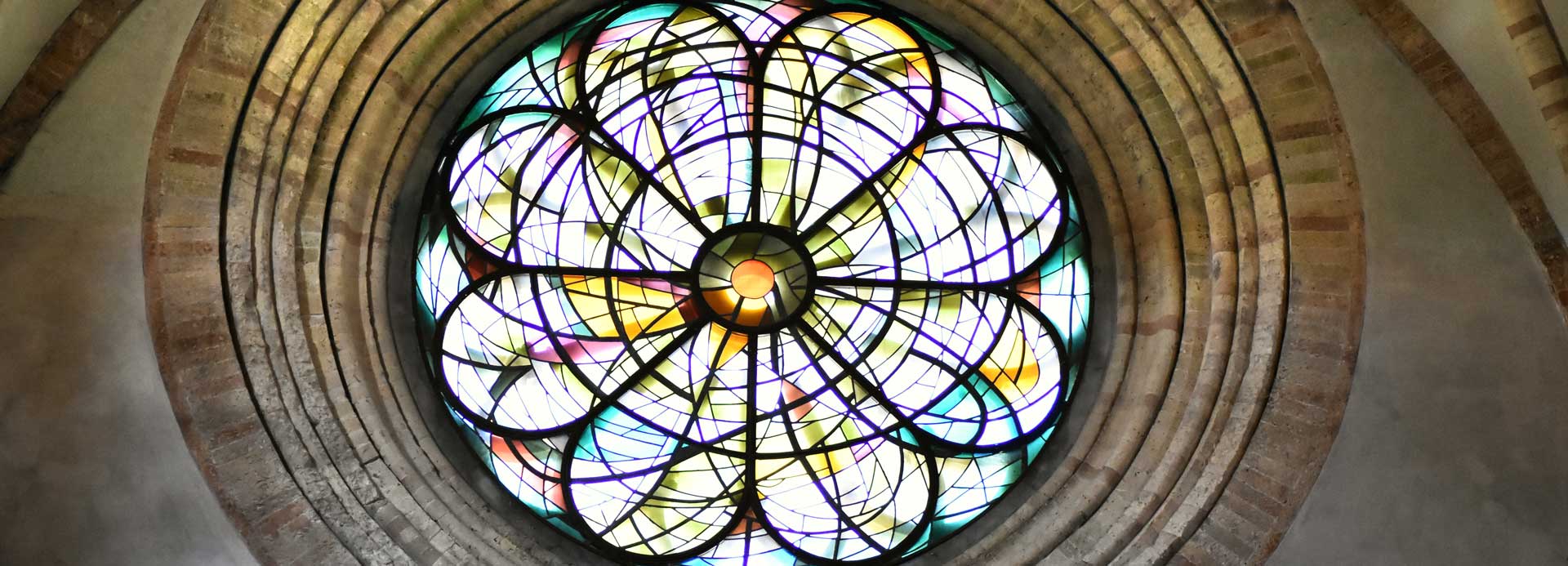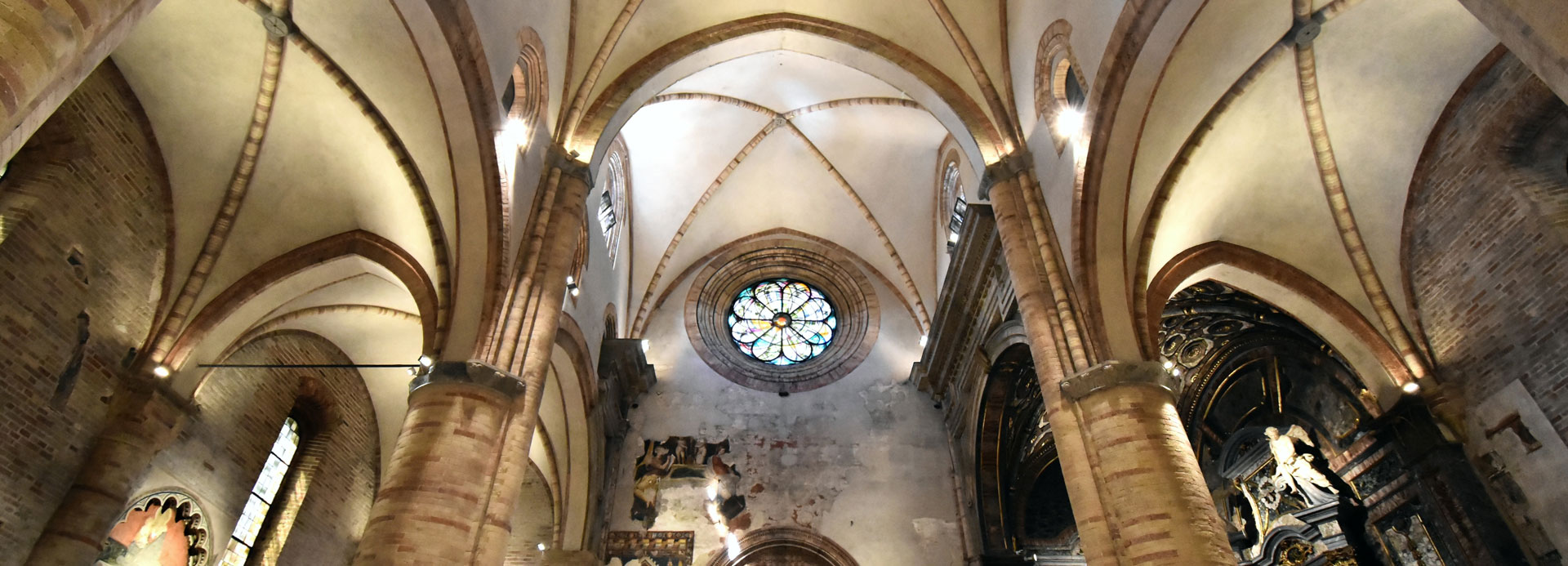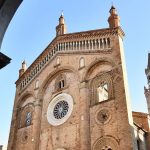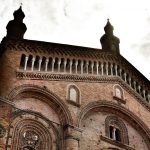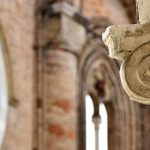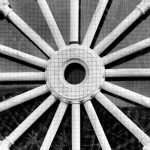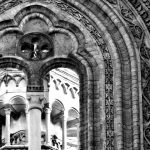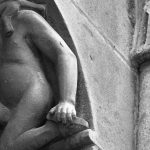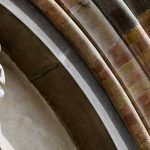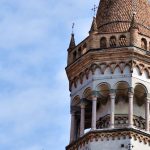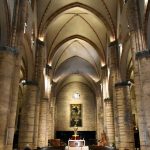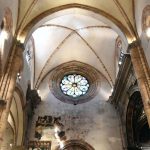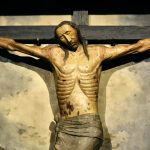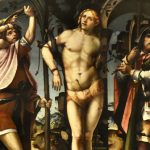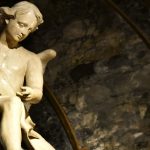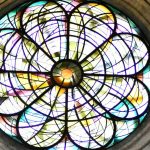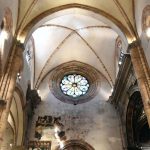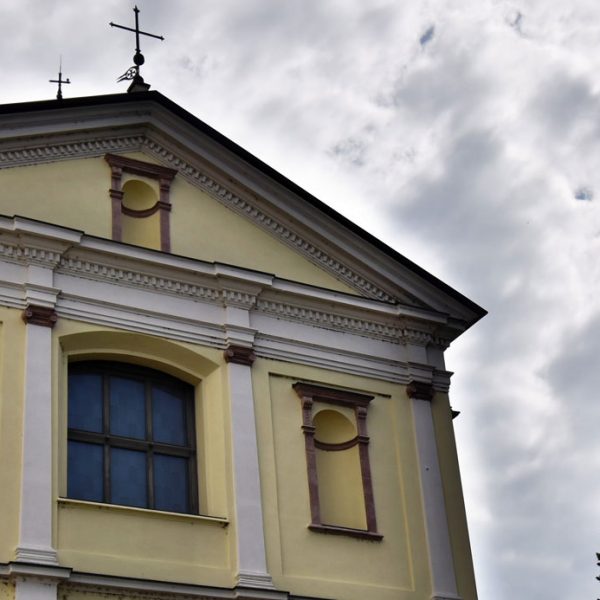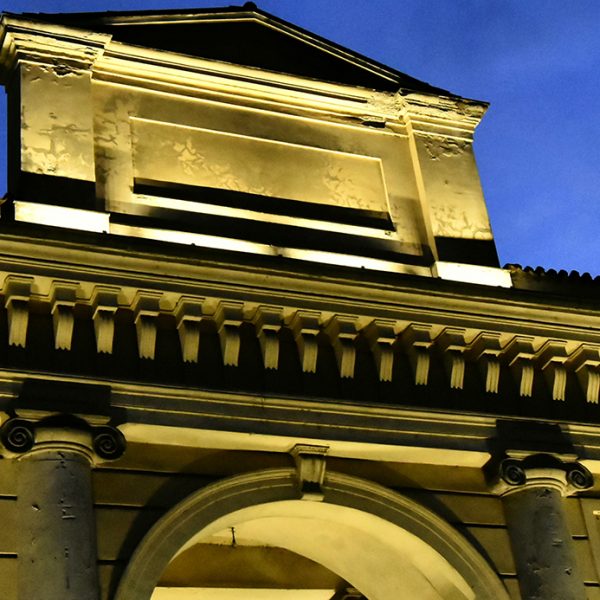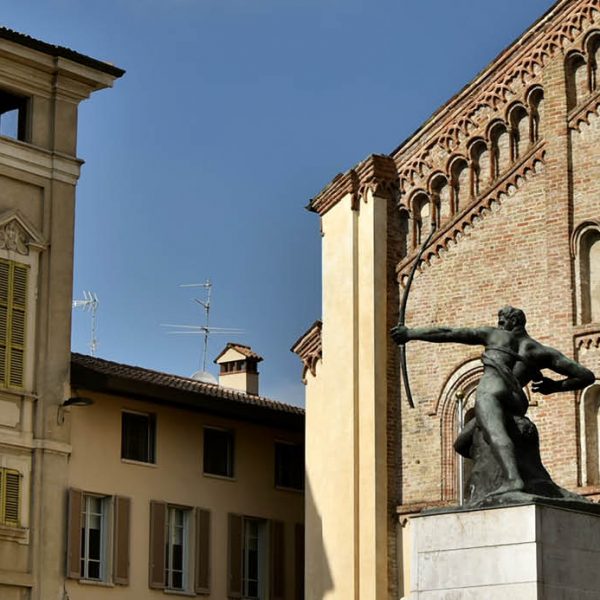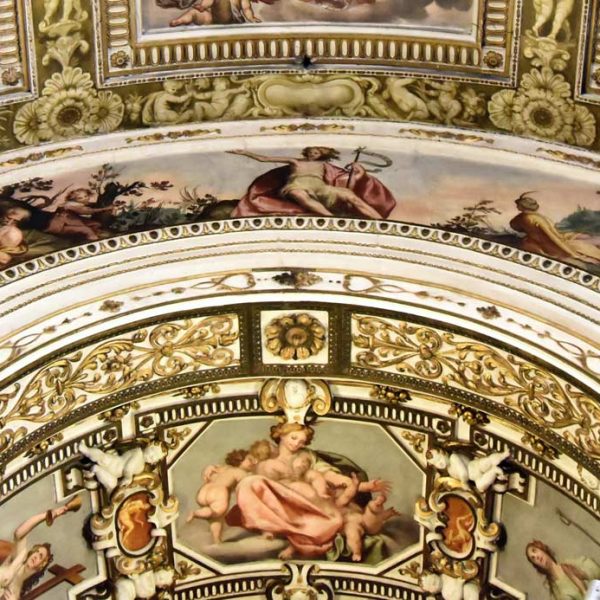 Tutti i luoghi
Tutti i luoghi
According to one of the legends on the origin of the city, reported by Sixteenth-century historians, in correspondence with the current Cathedral there was a more prominent area than the surrounding marshy territory, called Dosso dell’Idolo, on which there was a small church called ‘Santa Maria della Mosa’, a swamp.
Legend has it that the first urban settlement was founded by some fugitives who hid in swampy and inaccessible areas to escape the invasion of the Lombards. On 15 August 570, these men gathered in the small church known as the Meuse – which was precisely dedicated to ‘Santa Maria Assunta’ – under the guidance of the most eminent among them: Cremete. They decided to found a city that took the name of Crema from him.
Virtual tour of Piazza del Duomo
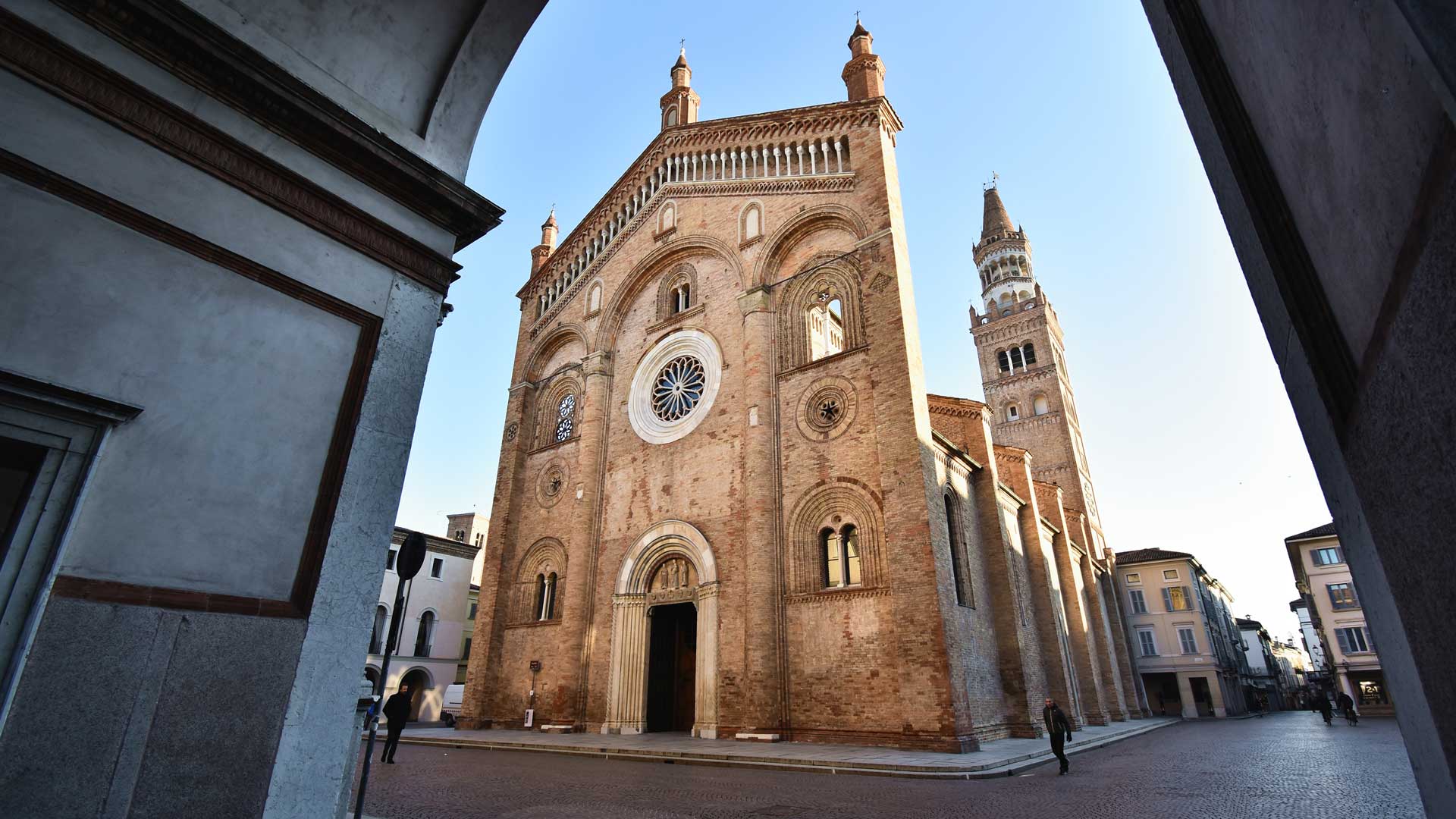
The pre-Romanesque church
The oldest remains of a church, which we can call pre-Romanesque, are those present under the termination of the southern and northern naves. At the present stage of the studies it is not possible to say precisely when it was built and we must limit ourselves to a generic dating between the Sixth and Eleventh centuries.
It was a church with three naves ending in semicircular apses. This building must already have substantially the same dimensions as the subsequent ones and this is surprising considering that the first documentary attestation of the toponym of Crema dates back to 1074 and that only in 1084 was it defined as castrum. Previously, therefore, there must have been a large community that recognized itself in the church of ‘Santa Maria Assunta’.
The Romanesque church
In the last quarter of the 11th century, the importance of Crema increased enormously, thanks to the immigration of noble families from nearby cities, in particular from Bergamo and Cremona.
In parallel with the development of the city, on an unspecified date between the last quarter of the 11th century and 1160 – the date of the partial destruction of the church following the siege of Barbarossa – the first Romanesque cathedral was built.
The first documentary mention of the ecclesia Sanctae Mariae de Crema dates back to 1143 and until the erection of the diocese, it will always be called either ‘Santa Maria Maggiore’ or simply ‘Chiesa Maggiore’.
Perhaps the rebuilding of the building was caused by the earthquake of 1117, in any case the new walls were set over the previous structures, tracing both the plan and the dimensions: therefore again three naves ending in semicircular apses and dimensions of approximately 46 x 24 meters, dimensions suitable for the community of a quasi-city that nevertheless aspired to become a bishopric and therefore a full-fledged city.
In this period, from a religious administration point of view, Crema was divided between the dioceses of Piacenza, Cremona and Lodi. Specifically, the ‘Chiesa Maggiore’ depended on the diocese of Piacenza, although for short periods it was subject to that of Cremona. From a civilian point of view, Crema struggled to assert its independence from Cremona, establishing itself as a free municipality, but gradually placing itself under the protection of Milan.
Of this building, accessible from the crypt, the apse of the southern nave with the masonry altar decorated with murals dating back to the first half of the twelfth century remain. They depict the feet of some characters, probably Apostles.
The renovation of the eastern area
Between the end of the 12th and the beginning of the 13th the east area of the church was rebuilt, raising the floor to the current level and burying the old semicircular apses and altars. The new apse terminations were flat, according to the model of Cistercian architecture. Of the interventions carried out in this period of time, the rectangular pillar between the presbytery and the end of the southern nave, the external masonry of the fifth span of the south aisle, the access arch to the chapel of St. Pantaleone are visible today.
The Gothic church
According to the dates provided by tradition, the Gothic Cathedral, as it appears today, was built between 1284 and 1341, the year in which the imposing wind facade was completed. Most of the construction, however, must have already been completed between the last years of the thirteenth century and the early fourteenth century, as evidenced by the fragments of the fresco datable mostly to these years. Even the sculptures of the main and southern portal can be dated to the early fourteenth century. In this period the three naves were therefore reconstructed in the forms of Lombard Gothic, in which the round arches coexist between the pillars together with the pointed arches that support the cross vaults.
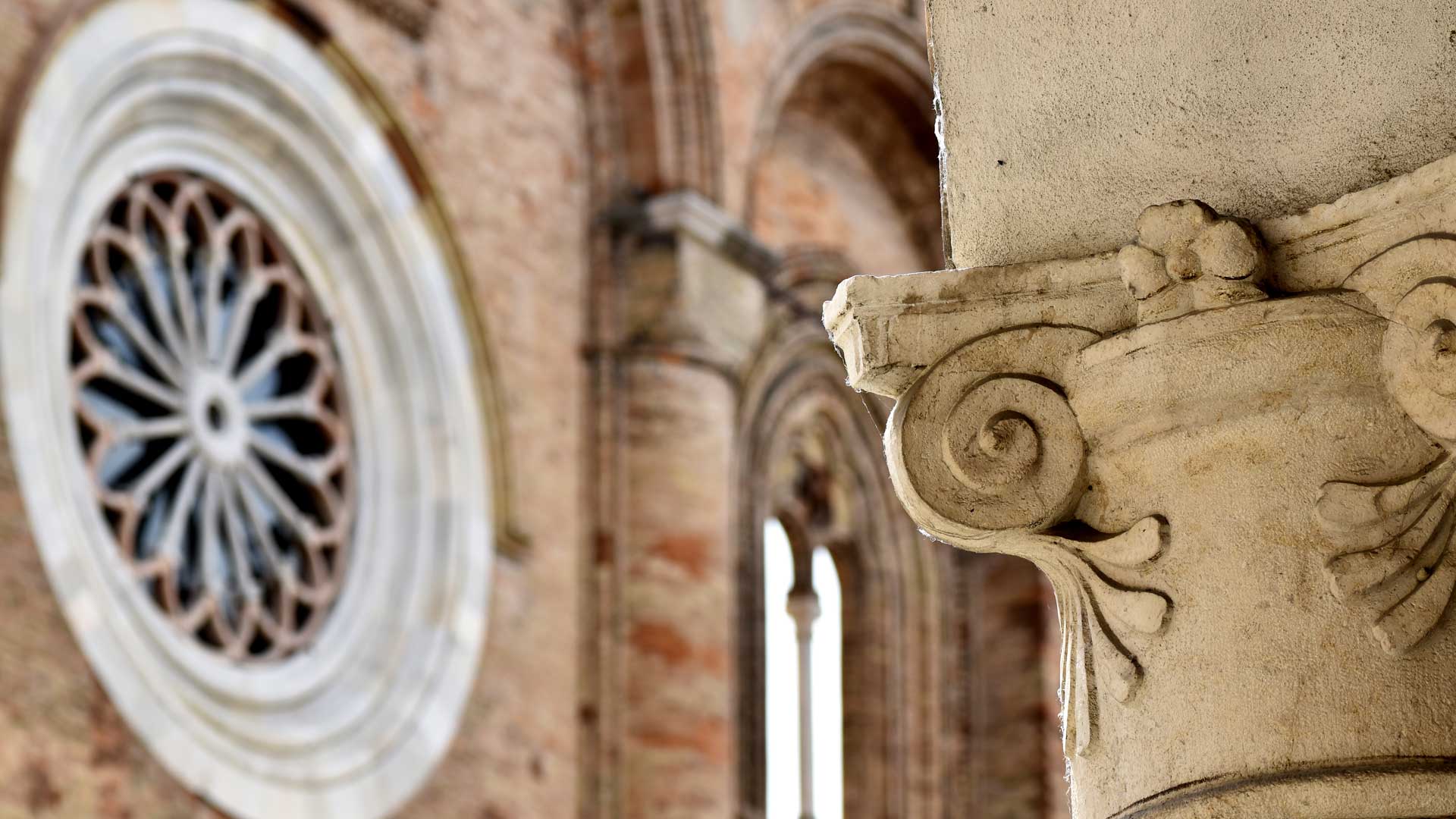
Subsequent changes
Over the centuries, as liturgical and devotional needs changed, numerous changes were made to the choir and presbytery area and various altars were added in the side aisles. From 1580, with the erection of the diocese of Crema, the Duomo assumed the role of Cathedral.
Between 1776 and 1780 the interior was rationalized by receiving a unitary aspect in the proto-neoclassical style. Today only the first chapel remains of this intervention, entering on the left. It was, in fact, removed during the works carried out between 1952 and 1958 which brought the church back to its presumed fourteenth-century appearance. Some of the works discovered or removed during these works are now preserved in the Civic Museum of Crema and Cremasque.
Between 2010 and 2014, important restoration works involved the Cathedral including the complete rearrangement of the presbytery area with the construction of a new ambo and a new chair.
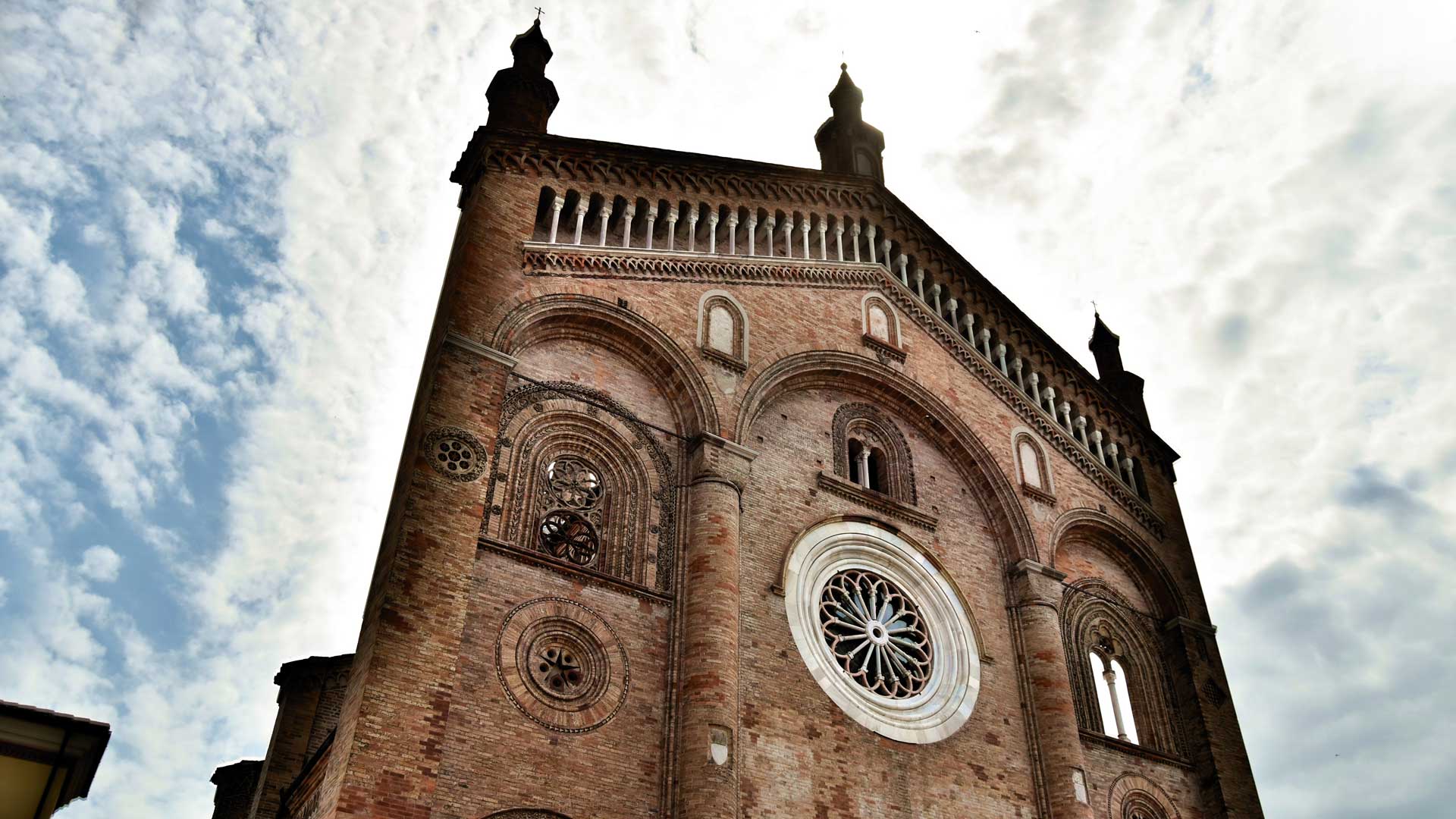
The entire facade is characterized by the contrast between the warm color of the terracotta and the white marble, but once it featured numerous murals of which today only a few fragments of the preparatory plaster and traces of colored pigments remain to the right of the main portal and on the side. south, where to the right of the side entrance one can hardly make out angelic figures with halo and a sun with flaming rays.
The main entrance of the Cathedral consists of a splayed portal with round arches, with side columns. The architrave, supported by two telamons, is decorated with the symbol of the mystical Lamb and the heads of four saints just above, the lunette houses the statues of the Virgin and Child between St. John the Baptist and St. Pantaleone.
The side entrance of the building is decorated with the so-called Madonna of the apple for the fruit she carries in her hand.
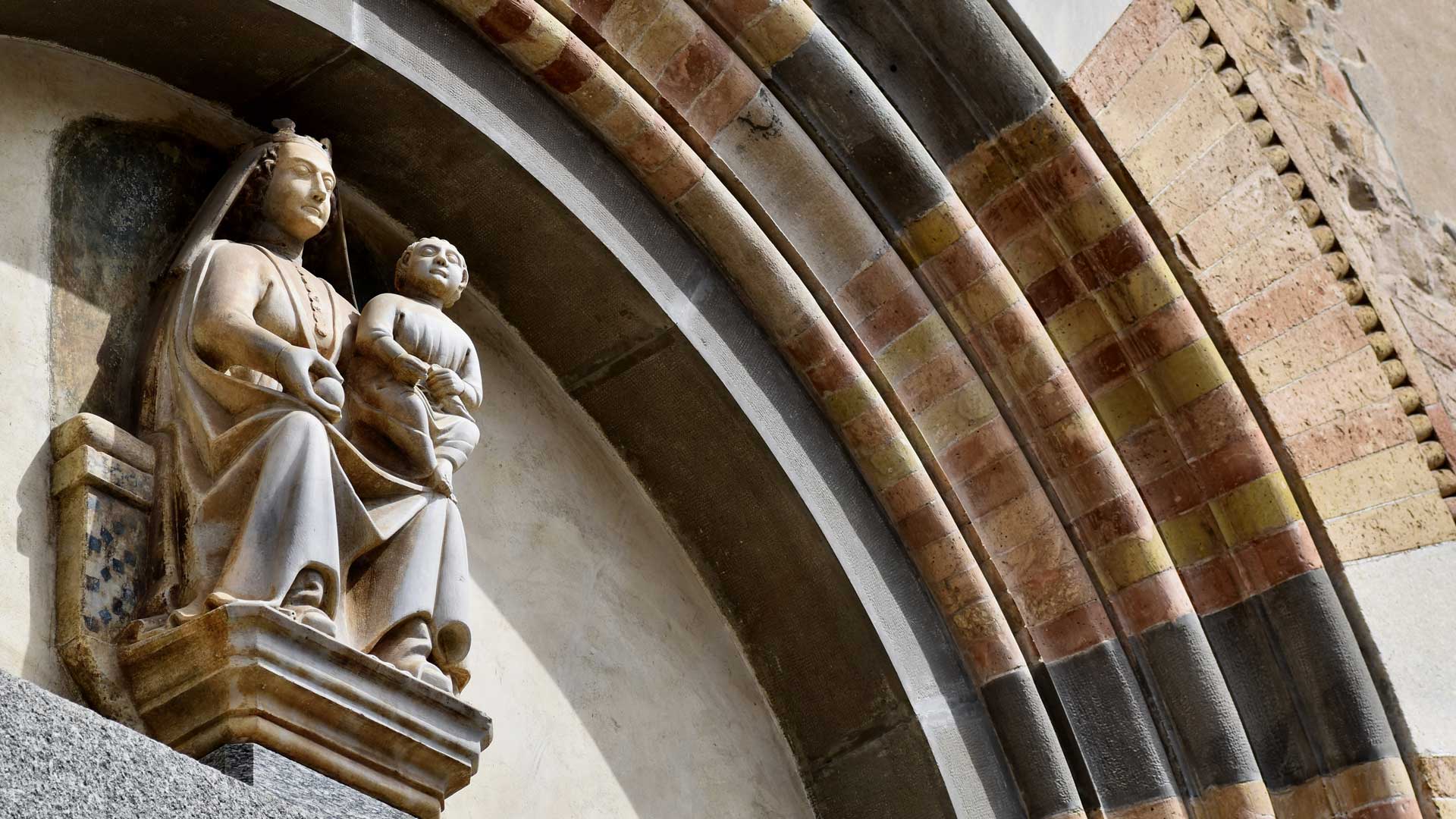
The bell tower is contemporary to the construction of the church, with the exception of the crowning which dates back to 1604.
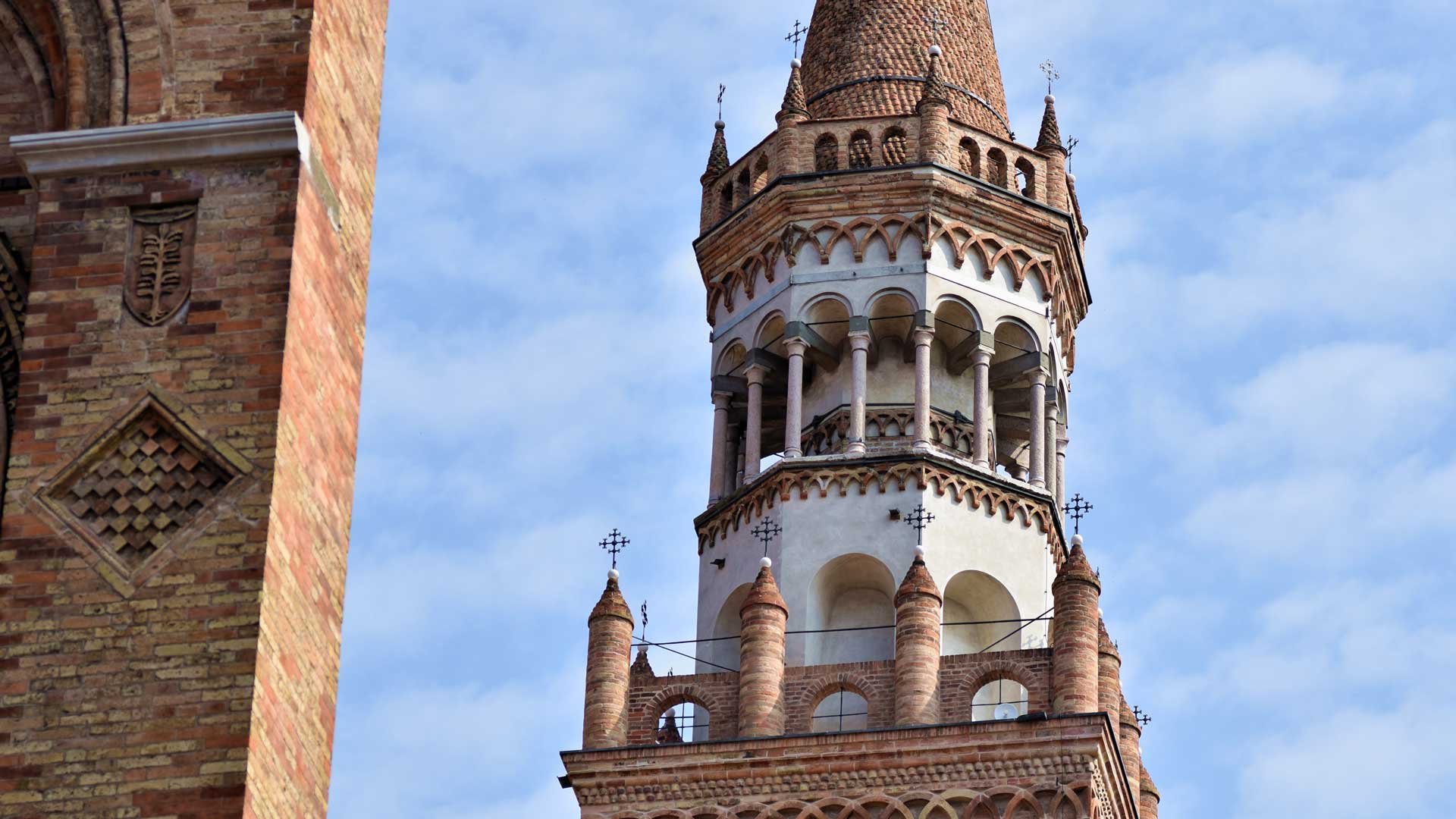
Internal
The interior has essential architectural lines: three naves (the lateral ones of lower height) divided into five bays by cylindrical pillars that support pointed arches. The ribs of the cross vaults are separated by elegant terracotta ribs.
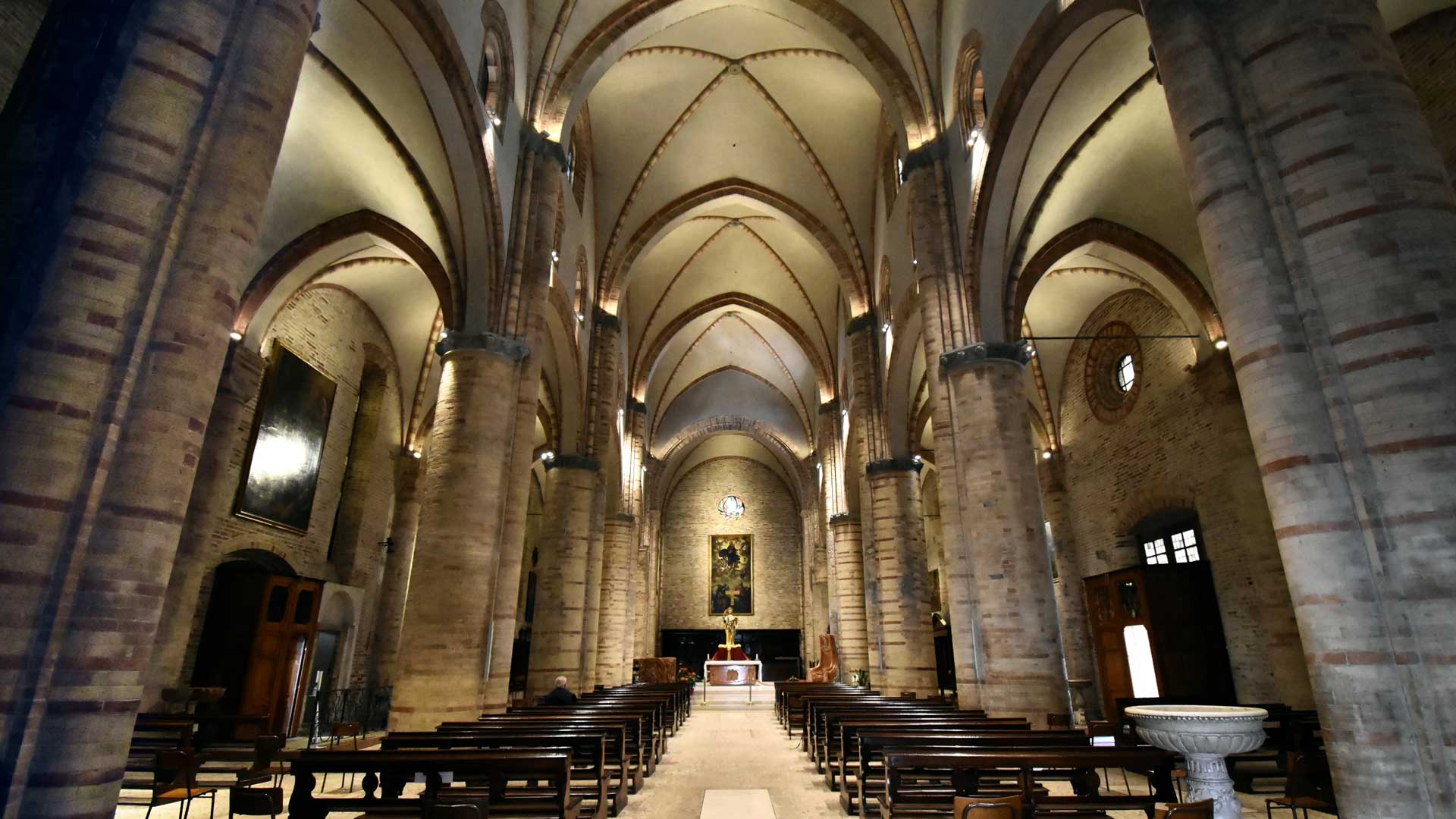
The internal walls and the counter-façade bear some fragments of the frescoes, which originally had to cover them entirely and which date back to decorative campaigns of different periods: from the 13th to the 15th century.
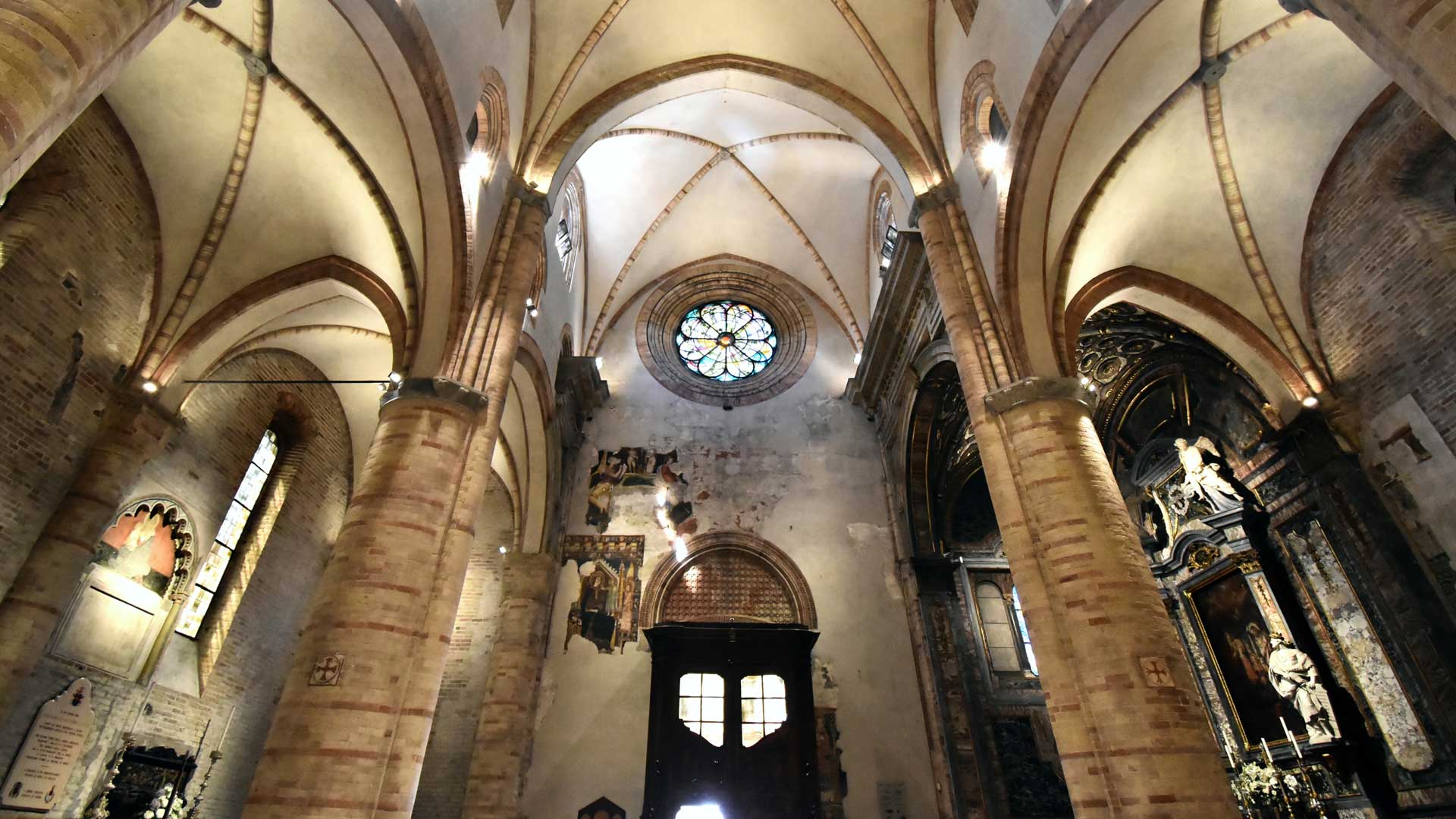
Entering from the main portal and walking along the right aisle, you will find the Holy Family with Saints Giovannino, Elisabetta and Zaccaria (about 1520-25) by Francesco Bissolo (Treviso, about 1470 – Venice, 1554), a work originally intended for devotion private and donated to the Cathedral in the nineteenth century.
The same span is decorated by Mauro Picenardi’s Martyrdom of Saint Lucia (Crema, 1735 – Bergamo, 1809). The canvas, once placed on the altar dedicated to the saint, represents the moment in which the executioner tries, unsuccessfully, to drag the woman to martyrdom.
Continuing along the nave and past the side entrance you can find the four canvases (canvases painted with oil colors of vast proportions applied directly to a wall) by Giovan Battista Lucini (Vaiano Cremasco, 1639 – Crema 1686) representing the Eucharistic Miracles ( 1685): the stolen Host, the Communion of Blessed Cadamosto, the Miracle of Pozen, the Miracle of Bolsena.
The altar to the right of the presbytery is dedicated to St. Pantaleone, patron saint of the city. The saint lived in the fourth century in Nicomedia, where he was baptized and educated in the Christian faith. He studied as a doctor and gave his treatments for free, attracting the envy of his colleagues, who denounced him to the Emperor Diocletian.
He was subjected to seven tortures, the last of which, the beheading, led to his death. Above the vault of access to the chapel is the Martyrdom of St. Pantaleone (1561-1585; 1790-1792) painted by Carlo Urbino (Crema, 1525 – 1585) and remodeled by Mauro Picenardi (Crema, 1735 – Bergamo, 1809): the painting collects some of the seven tortures to which Saint Pantaleone was subjected which culminate in the central beheading. On the altar there is the wooden statue of St. Pantaleone (about 1513-28): the name of the sculptor who made it is still unknown, the saint bears the symbol of martyrdom, the palm tree in one hand, and in the other he carries a book.

On the left side of the chapel there is the canvas with the Saints Vittoriano, Pantaleone and Bellino (1779-1781) by Mauro Picenardi: the patron saint of the city, dressed in red with an ermine mantle that recalls his profession as a doctor, it is flanked by two other holy martyrs, Vittoriano and Bellino.
On the pillar that delimits the presbytery there is a sculpture representing St. Nazario (1475-80) attributed to Pietro Antonio Solari (Milan, about 1455 – Moscow, 1492), coming from the Milan Cathedral and donated to the Cremasca Cathedral in 1959 by Giovanni Battista Montini , then archbishop of Milan, future Pope Paul VI.
The apse is now embellished with the canvas of the Assumption (about 1530-40) by Vincenzo Civerchio (Crema, about 1470 – about 1544): the painting, representing the Madonna assumed into heaven, to which the church is dedicated, was later restored. by Mauro Picenardi (Crema, 1735 – Bergamo, 1809) who united the two parts into which it had been divided.
On the walls of the choir we find the Annunciation (1523) by Vincenzo Civerchio (Crema, around 1470 – around 1544), the Holy Family (1520-40) by Bernardino Lanzani (San Colombano al Lambro, around 1460 – Bobbio, around 1530) and the Adoration of the Magi by Giovan Paolo Cavagna (Bergamo, about 1550 – 1627).
The altar on the left with respect to the apse preserves the Miraculous Crucifix: it is a sculpture dating from around 1320-40 by a Lombard sculptor. The effigy is very dear to the citizens of Crema, because it was the protagonist of various prodigious events, the first of which took place in 1445 during the clashes between Guelphs (pro-Venetian) and Ghibellines (pro-Milanese). The soldiers of this faction took refuge in the church to warm themselves and lit a fire where they threw the Crucifix. According to tradition, the sculpture retracted its legs to avoid the flames while still retaining this posture. Subsequently, other miracles were attributed to the Crucifix, including the cessation of the rains (1708) and the absence of victims following the fire of a powder magazine (1780).
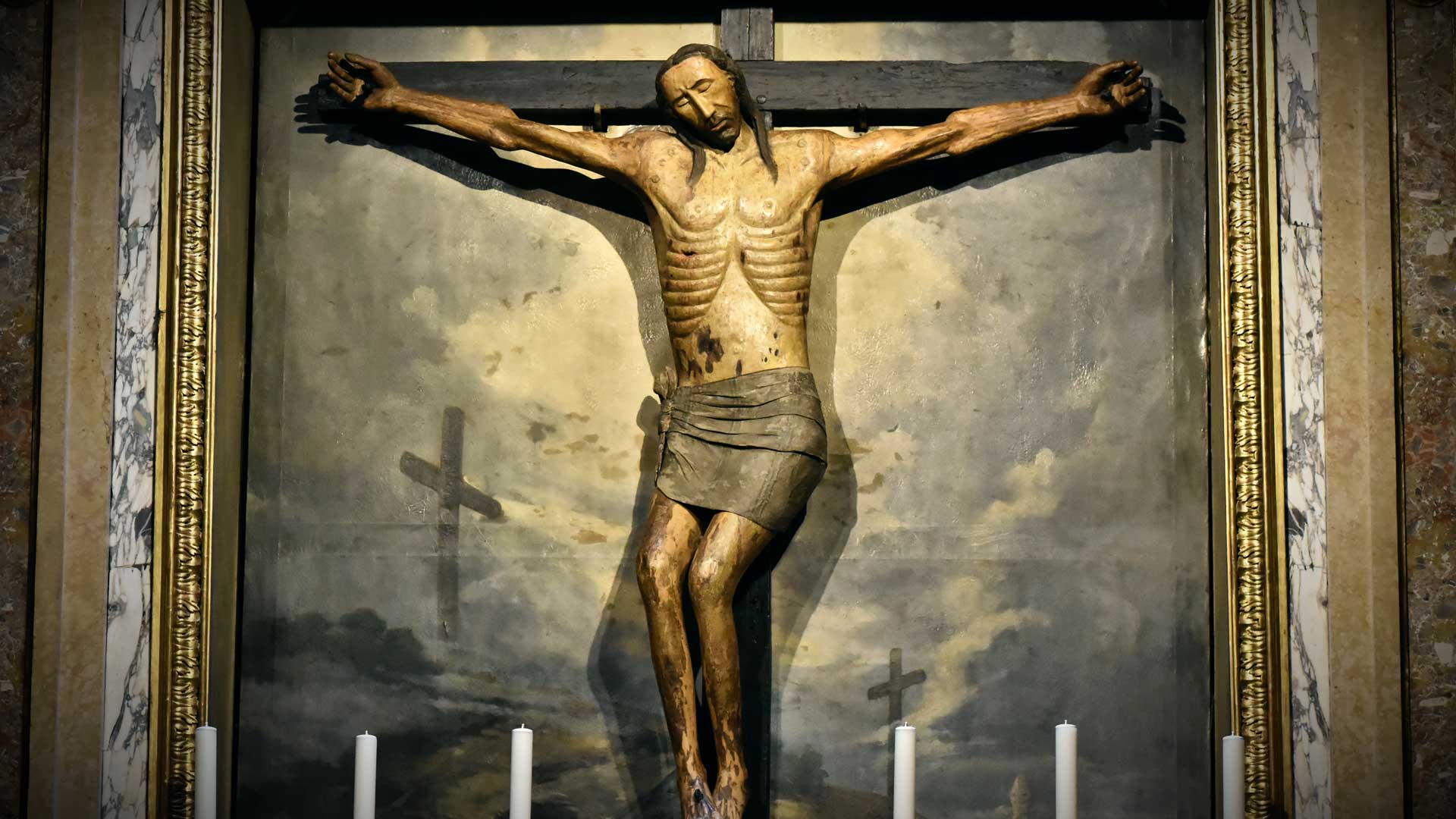
Under the presbytery, in the crypt, the remains of the previous churches are preserved. In this room there is a wooden Lamentation (around 1440-50) from the sanctuary of ST. Maria del Marzale in Ripalta Vecchia. The work is attributed to the workshop of Urbanino da Surso (Pavia ?, about 1380 – Pavia, about 1461). The altar houses the image of the Madonna del Popolo (1776-1780), created by Mauro Picenardi (Crema, 1735 – Bergamo, 1809).
Walking along the left aisle you will find the two sacristies, the old sacristy, rather bare and characterized by pointed arch vaults, and the capitular sacristy, where four paintings by Giovanni Brunelli are kept (Verona, 1644/46 – Crema, 1722) with episodes from the Life of the Virgin and the Instruction of the Virgin by Bernardino Lanzani (San Colombano al Lambro, around 1460 – Bobbio (?), around 1530).
Continuing you can admire the sculpture of the Virgin Mary, a wooden work by a Lombard sculptor from the sixteenth century, which still retains the original colors.
Above the left side entrance it is possible to admire the precious canvas depicting Christ appears to St. Marco in prison (1638-42) by the hand of Guido Reni (Bologna, 1575 – 1642), the painting remained unfinished on the death of the artist and was brought to Crema only in 1666.
A little further on is the panel with the Saints Sebastian, Rocco and Cristoforo (1519) signed work by Vincenzo Civerchio (Crema, circa 1470 – circa 1544).
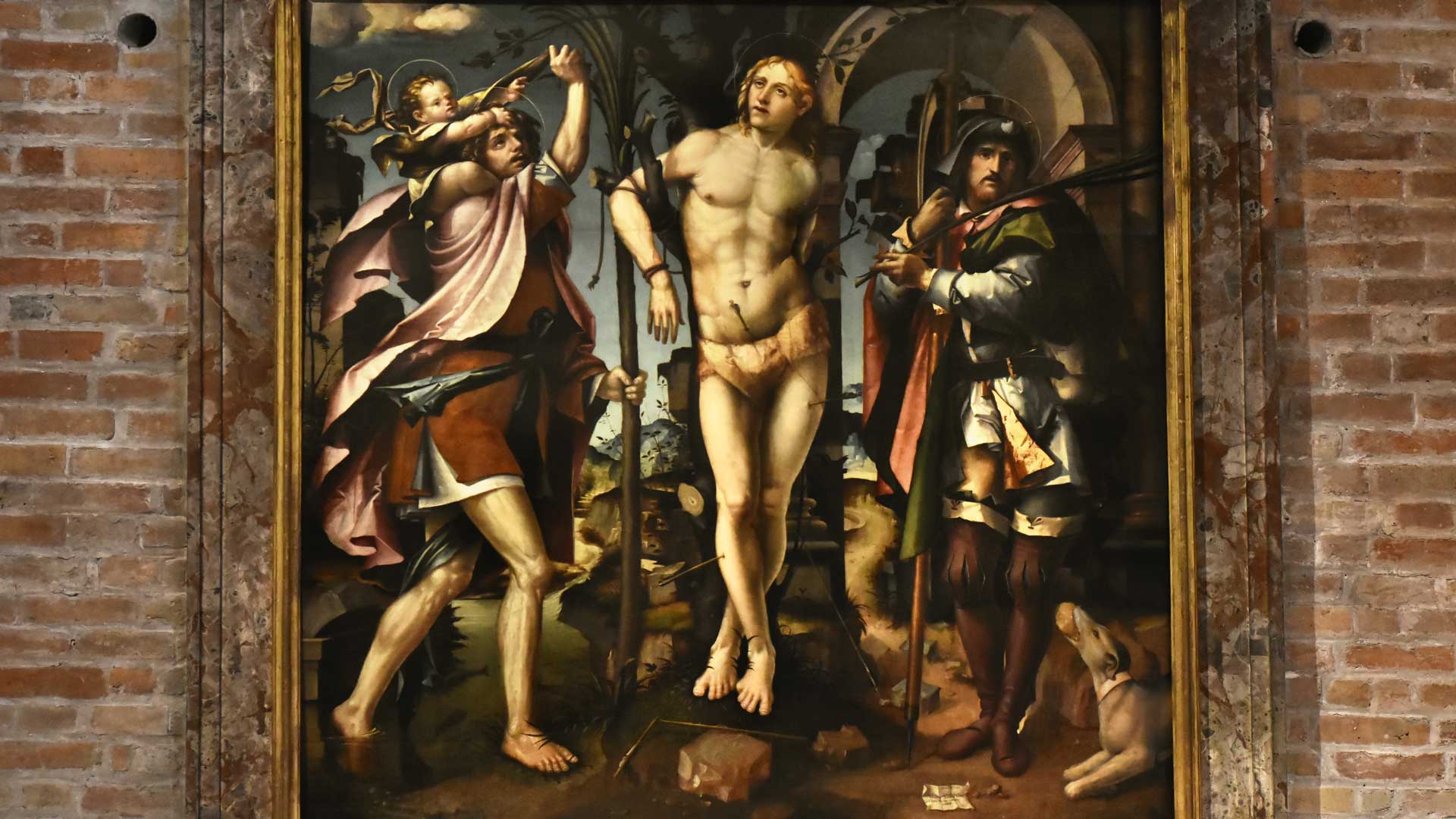
The last span you meet is the chapel of the ‘Madonna della Misericordia’, where the eighteenth-century marble decorations have been left that recall what must have been the appearance of the entire Cathedral before the restorations of the mid-twentieth century.
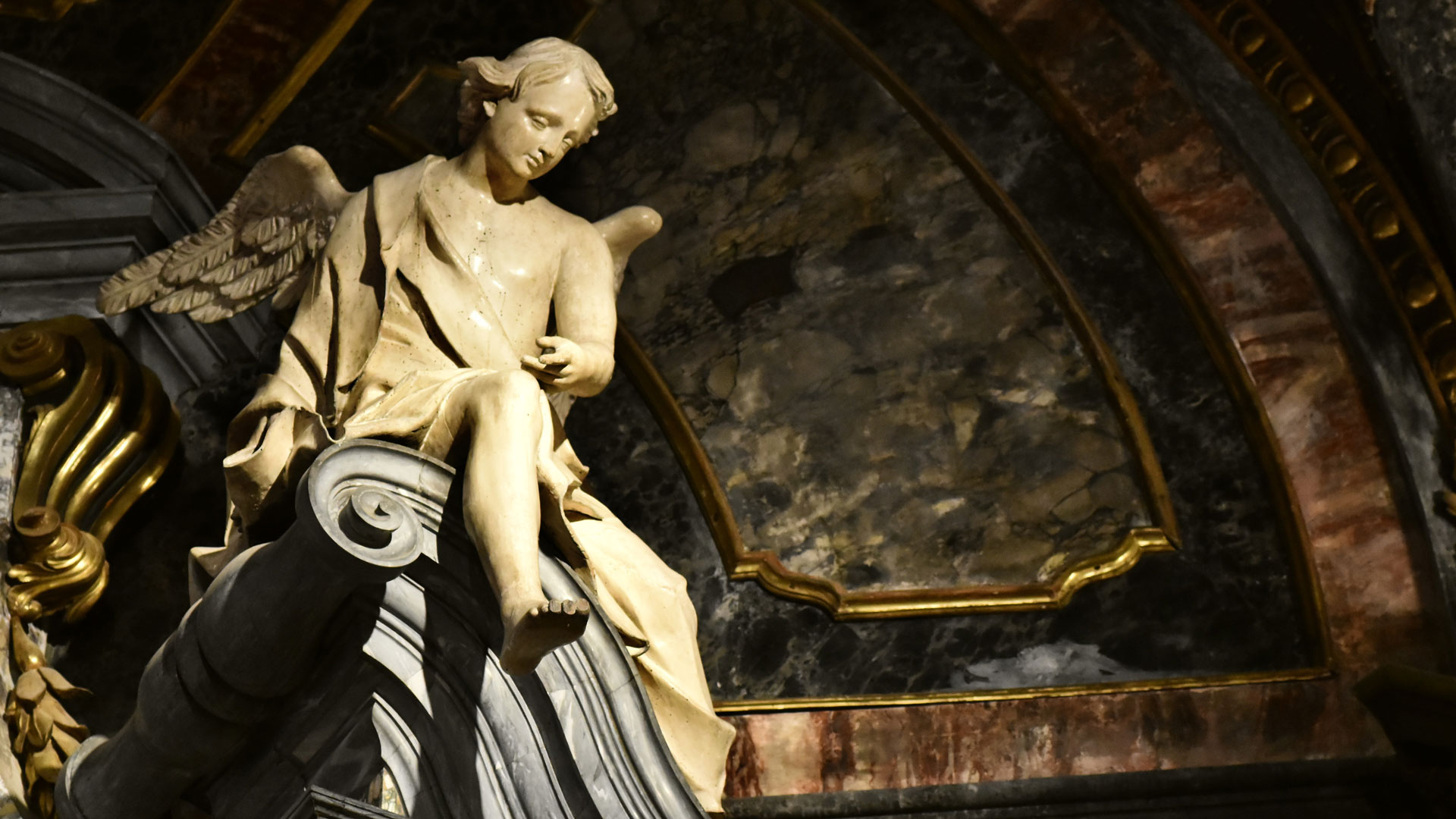
The altar is decorated with the miraculous image of the ‘Madonna della Misericordia’, heavily remodeled over the centuries. The work dates back to the fourteenth century and from the sixteenth century, following the healing of a man, it became an object of devotion.
Virtual tour of Piazza del Duomo
Informazioni
Piazza del Duomo
Website of the diocese of Crema
Hours subject to restrictions
Visits prohibited during religious celebretions

